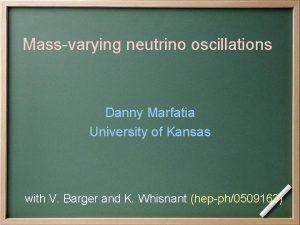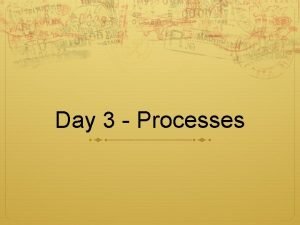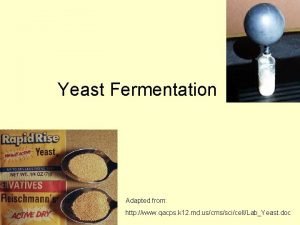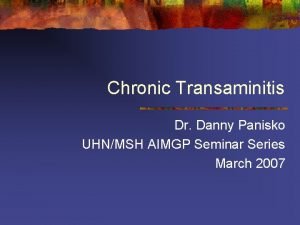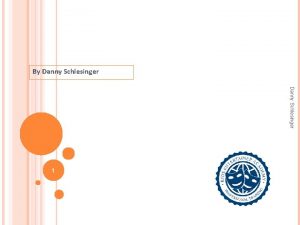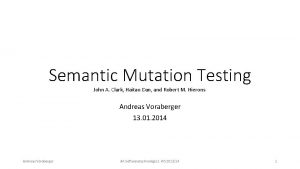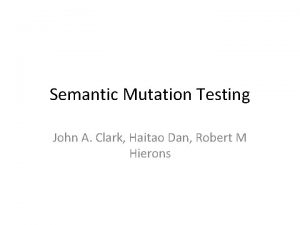Danny Z Chen 1 Rajasekhar Inkulu 2 Haitao

























- Slides: 25

Danny Z. Chen 1 Rajasekhar Inkulu 2 Haitao Wang 3 1 University of Notre Dame 2 Indian Institute of Technology 3 Utah State University So. CG 2014

A polygonal domain § A set of h disjoint polygonal obstacles with a total of n vertices § Free space: the space outside the obstacles h<<n is possible

Two-point shortest path queries § Design a data structure § to find a shortest path in the free space for any two query points s and t t s

vertical length horizontal length

Previous work and our results § both bounded by O(n+h 2+ε)

Other related work §

A graph G for finding a single shortest path (Clarkson, Kapoor, Vaidya, 87’) § The node set of G: all obstacle vertices and two types of Steiner points § Type-1 Steiner points: project each vertex to the left, right, up, down t for each obstacle edge, every two adjacent Steiner points define an edge in G v s a type-1 Steiner point

Type-2 Steiner points § cut-lines

The cut-line tree: O(log n) height G contains a shortest path between s and t G has O(nlogn) nodes and edges

Answering two-point queries § Key idea: “insert” s and t back to G (Chen et al. 00’) § insert type-1 Steiner points v connect to G via eight ``gateways’’ for each of s and t t s two gateways

Insert type-2 Steiner points t connect t to G via O(log n) gateways

The gateway graph § O(log n) nodes and O(log 2 n) edges § finding a shortest path in O(log 2 n) time In the preprocessing, shortest paths for all pairs of nodes are computed. The lengths of the orange edges are available during queries …… …… s t Remark: this approach can find π(s, t) if π(s, t) contains an obstacle vertex O(log n) gateways

Reducing the query time to O(log n) § v t obstacle vertex level numbers: 6 4 3 1

A new graph G’: Inserting more Steiner points on the cut-line tree § …

Insert more Steiner points § Consider a sub-tree in any super-level v

The new graph G’ §

The convex case: all obstacles are convex §

Non-convex case § A special case: assume their convex hulls are pairwise disjoint § The general case can be reduced to this special case using the extended corridor structure § The ocean M: the free space outside the convex hulls § Bays: free space not in M bays

Answering queries § t s

Query points are in bays ? ? § Determine an intermediate point p on the gate, such that p is in π(s, t) § Find π(s, p) in the bay § Find π(p, t) in the ocean M § π(s, t) = π(s, p) U π(p, t) easy: the bay is a simply polygon using the graph GM the bay gate s p t

Determine intermediate points on the bay gate § v 1 : the first point vertically visible to ab if we go from s to a on π(s, a) § If π(s, t) crosses az 1, there exists a shortest path π(s, t) containing z 1 as an intermediate point § If π(s, t) crosses bz 2, then z 2 is an intermediate point b s v 2 v 1 z 1 a z 2

The remaining case: All π(s, t) cross z 1 z 2 § There exists π(s, t) contains a particular point z § z: the intersection of the line containing v 1 z 1 and the line containing v 2 z 2 § However, z is not on ab have to use other techniques b s z v 2 v 1 z 1 a z 2 type-1 Steiner points build a graph on these Steiner points merge the graph with GM

Our techniques extended to the weighted rectilinear case § The obstacle edges are axis-parallel § Each obstacle allows the path to travel through with a weight s t

Results for the weighted rectilinear case § both bounded by O(n 2+ε)

Thank You
 Danny chen notre dame
Danny chen notre dame Chen chen berlin
Chen chen berlin Dr danny silver
Dr danny silver Joseph schooling michael phelps
Joseph schooling michael phelps Danny kindekens
Danny kindekens Summer loving regular
Summer loving regular Kuya preaching
Kuya preaching Danny graymore
Danny graymore Danny marfatia
Danny marfatia Danny cheney
Danny cheney Danny van noort
Danny van noort Danny delcambre
Danny delcambre Danny gibney
Danny gibney Pic microcontroller and embedded systems
Pic microcontroller and embedded systems Danny seow
Danny seow Tilgangsmåde
Tilgangsmåde Transmitis
Transmitis I meet raisa last night and .... signed .... t-shirt. *
I meet raisa last night and .... signed .... t-shirt. * Danny elfman parents
Danny elfman parents Danny sullivan
Danny sullivan Danny elfman images
Danny elfman images Danny panisko
Danny panisko Sullivan search engine
Sullivan search engine Danny amato
Danny amato Danny hendler
Danny hendler Sts score variables
Sts score variables








